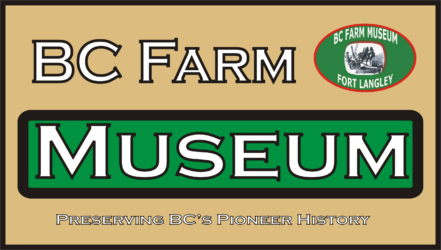

Beekeeping (or apiculture, from Latin apis, bee) is the maintenance of honey bee colonies, commonly in hives, by humans. A Beekeeper (or Apiarist) keeps Bees in order to collect honey and other products of the hive (including beeswax, propolis, pollen and royal jelly), to pollinate crops, or to produce bees for sale to other beekeepers. A location where bees are kept is called an apiary.
Honey Bees are not native to British Columbia. Two colonies were imported into Victoria from Oregon 120 years ago and from that small start the bees have spread throughout the province. Much of the early honey was harvested from old snags where swarms found a natural hive. Early Chinese workers used the skeps (straw hives), but these were later replaced by the present day type which are easier to handle.
Straw Beehives:
Before the advent of box-type hives, other artificial hives such as the skep (straw hive) were used. The skep was popular among beekeepers. A large bell-shaped basket made of coils of grass or straw, this hive was relatively light and easy to move and handle.

Donated by Ron Tarves in 1986.
Due to the spread of disease amongst bees and the inability to thoroughly clean these hives, they were discontinued and destoyed. We are lucky to have this one at our museum.

The Skep hive still remains the symbol for honey.
Bee Hive Frames:
The Langstroth Bee Hive, patented in October 1852, is the standard bee hive used in many parts of the world. The advantage of this hive is that the bees build honeycomb into frames, which can be moved with ease. The frames are designed to prevent bees from attaching honeycombs where they would either connect adjacent frames, or connect frames to the walls of the hive. The movable frames allow the beekeeper to manage the bees easily.

Queen Excluder

Donated by Gibb Clark in 1989
Bee Feeders:
Sugary syrup, which can be high-fructose corn syrup (HFCS) or dissolved table sugar, can be fed from outside the hive or inside the hive. The glass feeder is used to feed the bees after the honey is extracted.
Protective Clothing:
Beekeepers often wear protective clothing to protect themselves from stings.
While knowledge of the bees is the first line of defence, most beekeepers wear gloves and a hooded suit or hat and veil. The face and neck are the most important areas to protect, so most beekeepers will at least wear a veil.

Donated by Gibb Clark in 1989
The protective clothing is generally light coloured (but not colourful) and a smooth material. This provides the maximum differentiation from the colony’s natural predators (bears, skunks) which tend to be dark coloured and furry.

Donated by Ron Tarves in 1986.
A bee smoker (usually called simply a smoker) is a device used in beekeeping to calm honey bees. It is designed to generate smoke from the smouldering of various fuels, hence the name.The fact that smoke calms bees has been known since ancient times; however, the scientific explanation was unknown until the 20th century and is still not fully understood. The smoke creates an opportunity for the beekeeper to open the beehive and work while the colony’s defensive response is interrupted. In addition, smoke initiates a feeding response in anticipation of possible hive abandonment due to fire. When a bee consumes honey the bee’s abdomen distends, making it difficult to make the necessary flexes to sting. (The latter has always been the primary explanation of the smoker’s effect, since this behavior of bees is easily observable.)
Smoke is of limited use with a swarm, partly because swarms have no honey stores to feed on. It is usually not needed, either, since swarms tend to be less defensive as they have no home to defend, and a fresh swarm will have fed well at the hive it left behind.
HONEY


HONEY is a sweet food made by bees using nectar from flowers. The variety produced by honey bees is the one most commonly referred to and is the type of honey collected by beekeepers and consumed by humans. Honey produced by other bees and insects has distinctly different properties.
Honey bees transform nectar into honey by a process of regurgitation and store it as a primary food source in wax honeycombs inside the beehive. Beekeeping practices encourage overproduction of honey so the excess can be taken from the colony.
Honey extraction is the central process in beekeeping of removing honey from honeycomb so that it is isolated in a pure liquid form.
The HONEY EXTRACTOR (aka The Honey Machine!) is a device used to extract honey from honeybee frames. This is achieved by uncapping each frame/comb, and loading that frame/comb into the extractor, and spinning out the honey.
The extractor spins (like a centrifuge) the honey out of the combs, slopping it on the inside liner of the extractor, where the honey runs down, collects in the bottom, and is bottled from a valve in the bottom of the extractor.








